In 1914, Britain’s most prestigious department store, Harrods, decided to open an overseas branch in Argentina.
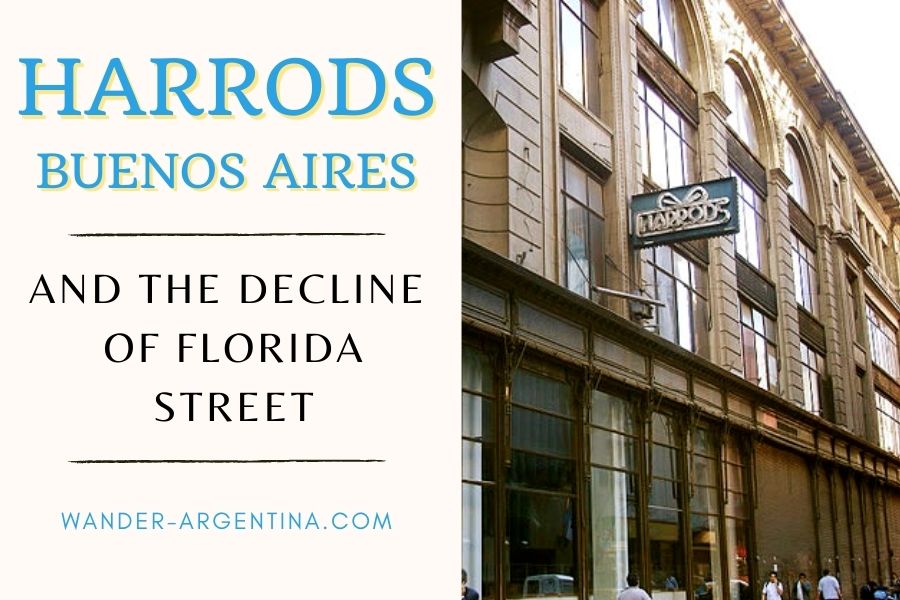
The beautiful Edwardian style building occupies the entire block between the pedestrian thoroughfare, Florida street, Córdoba, Paraguay and San Martín.
Harrods Buenos Aires remains the first and only foray into foreign territory for the famous retailer and for many years was Buenos Aires’ most elegant department store.
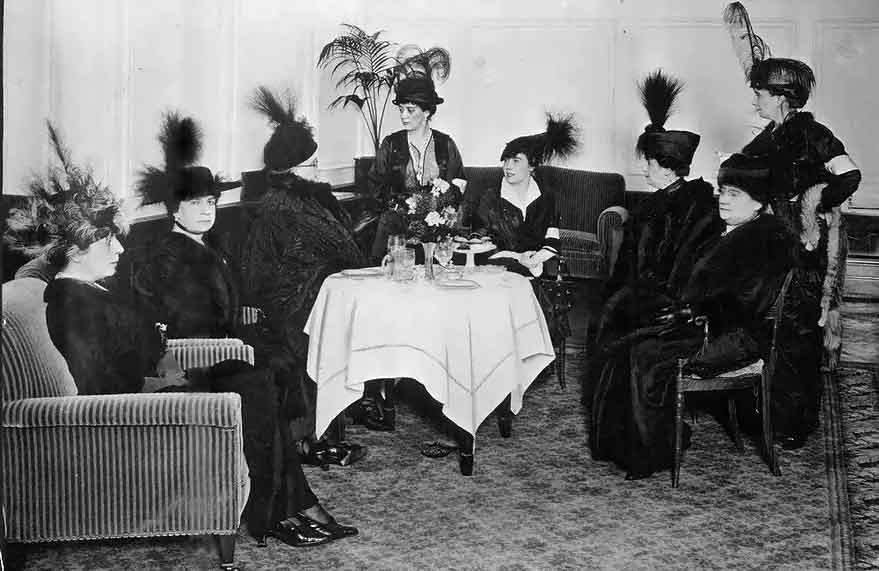
Present are high society women: Dalmira Cantilo, Mercedes Piñero Pacheco, Teodolina Alvear, Silvia Fernández, Hortensia Peco, Angela Lastra and Enriqueta Quirno.
The now-luxurious London emporium, founded by Charles Henry Harrod, began as a humble one-room tea retailer in 1834 in the Knightsbridge neighborhood of London.
The flagship store still operates today.
Today it is owned by the nation of Qatar and is a huge London tourist attraction, receiving tens of millions of visitors per year.
And then there’s Harrods Buenos Aires.
The Building
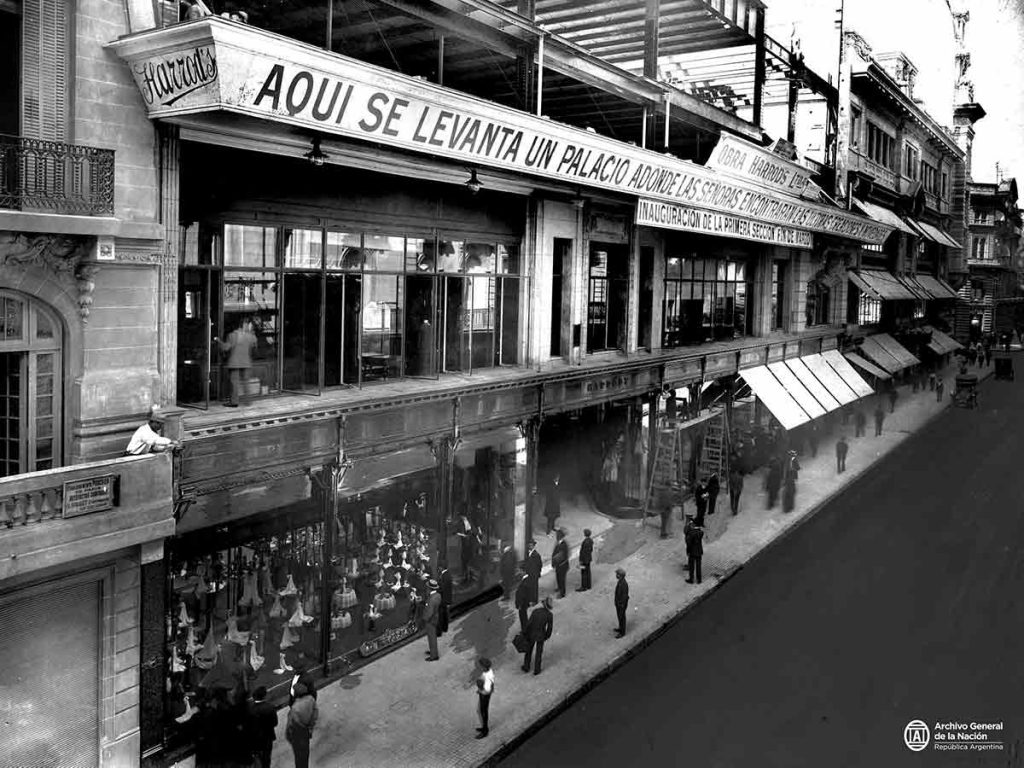
Designed by British architect, Paul Bell Chambers and American, Louis Newbery Thomas, Harrods Buenos Aires had cedar wood floors, imported granite stairs and columns, wrought iron elevators that held 20 people, beveled glass mirrors, fans made with blades of bronze, and decadent alabaster chandeliers.
The luxurious tea salon instantly became known as the gathering place for the city’s elite.
Harrods Buenos Aires was the place to buy not only household items, electronics and toys, but Italian suits, expensive perfume and imported jewelry.
“An establishment equal to those that constitute the obligatory mecca of Argentinian families visiting Europe.”
-Argentina Weekly Magazine, Caras y Caretas (Faces & Masks)
As they promised in their slogan, “Everything under one roof.”
Harrods’ Expansion During Argentina’s Heyday
To lure shoppers Harrods arranged over the top publicity stunts, such as exhibiting a live elephant brought from India on the first floor.
They also displayed a typical red London double-decker bus in a ground floor salesroom.
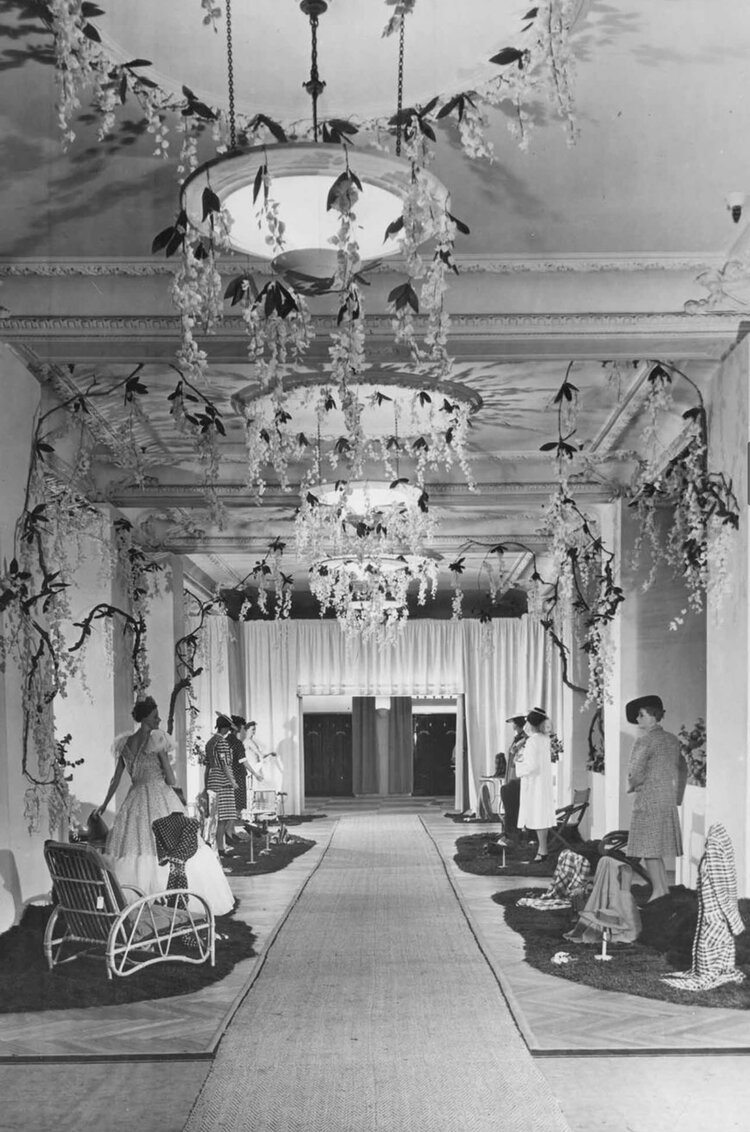
The store expanded until 1920, finally taking up the whole block with a total 6529 m² (70278 ft²) of surface area
In 1922, it joined forces with the competition: the nearby Gath y Chavez department store.
The next decade was particularly difficult worldwide after the 1929 stock market crash.
In 1930 Argentina had its first military coup, but Argentina’s middle and upper class had enough built-up capital to sustain Harrods through the decade.
Cultural Significance & Celebrity Shoppers
Virtually any porteño who could afford it frequented Harrods through the years, including former President of Argentina, Julio Argentino Roca.
Writer, Adolfo Bioy Casares (an anglophile who was also a habitué of Bar Britaníco) visited religiously for a haircut.
The Godfather of Argentine literature, Jorge Luis Borges, would plant himself at one of tables near the window along Florida Street at the large cafe that served a typical British breakfast and tea time.
After Juan Domingo Perón was elected president in 1946, Eva Perón shopped here, despite her status as a martyr for the country’s underclass.
In 1950, iconic starlet and later chat show host, Mirtha Legrand (who also had a radio show at El Ateneo — another spectacular building) starred in a film called, ‘La Vendedora de Fantasias‘ (The Seller of Fantasies), filmed in Harrods basement production studio.
You can watch the film in its entirety on Youtube (video, opens in a new window), which is great practice for those trying to pick up Argentinismos.
Argentina’s first children’s television program, ‘La Luna de Canela‘ was also filmed in the basement studio at Harrods between 1970-72.
A slow — and for Buenos Aires residents— agonizing death of Harrods began in 1989 when the top floors of the building began closing, one by one, from the seventh floor down. At the end, only the first floor remained open.
Finally in 1998, signaling the total economic meltdown that would come to Argentina a few years later, Harrods Buenos Aires closed altogether.
Today the decaying elegance inside the building serves as a reminder of Argentina’s importance and wealth in the early days of the twentieth century, and its astounding economic decline since.
Nostalgic Porteños, from Generation X on up, fondly remember going to the children’s barbershop and lining up for a photo-op with the Three Wise Men at Christmas time.
“I went there to buy clothes for school,” says Argentine historian and tour guide Eduardo Masllorens.
“There was a dwarf with a little hat who opened the doors of the cars that pulled up. Anyone who is over 50 remembers the dwarf from Harrods.”
As with many older life-long residents of Buenos Aires, Masllorens remembers going to visit Santa Claus at Harrods as well.
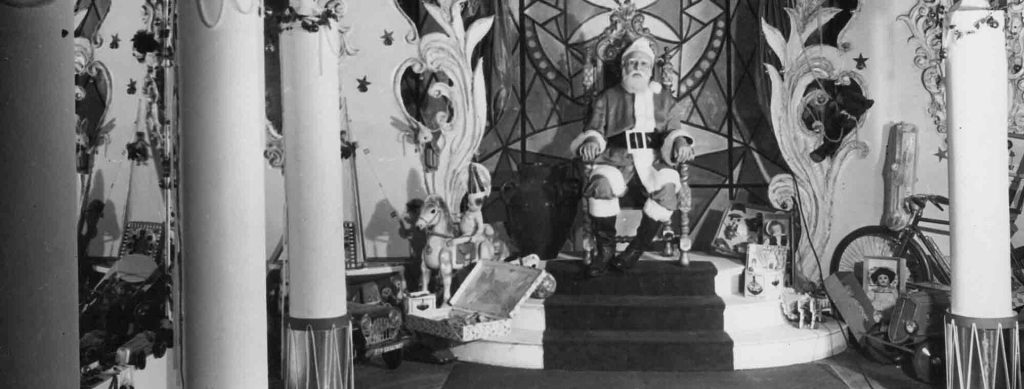
“All the kids would write their Christmas wishes on a piece of paper and then Santa Claus would lift you up and kiss you and, I don’t know how the system worked, but they would somehow arrange for the parents to get the (child’s) wish list on the way out,” he says.
An Abandoned Architectural Treasure
The closing of Harrods in the late 1990s was central to the decline of Florida Street and Buenos Aires’ downtown in general and illustrative of bad times ahead.
A conflict over the use of the name ‘Harrods’ between the Argentine owner, Atilio Gibertoni with UK Harrod’s owner, Egyptian shipping magnate Mohammed Al-Fayed (and father of Princess Diana’s late boyfriend Dodi Fayed) worked its way through the London courts for nearly a decade.
Finally it was determined that Harrods Buenos Aires is an autonomous entity, but with the property saddled in debt and need in of tender loving care after years of abandonment, it continues to deteriorate.
Efforts to revive Harrods have been thwarted, and the building remains abandoned, despite its official status as a national architectural treasure.
It’s reported that the owner has received dozens of offers, including from nearby Galerías Pacífico; the Chilean department store, chain Falabella (which has since left the country altogether); the Spanish firm, El Corte Inglés; and the famous French store, Printemps.
Nonetheless, apart from opening up for a few special events over the years sponsored by the Buenos Aires city government, such as 2003 gallery nights, and Tango Week in 2008 and 2009 (video, opens in a new window), Harrods has decayed and been a downtown eyesore for the last 25 years.
Outside, visitors see broken windows and some window panels boarded up.
If one can find a place to peek inside, there are still hints of its former glory in the form of carved wood moldings and chandeliers covered in dust.
According to the local daily, La Nación (link in Spanish, opens in new window) the owner, Gibertoni, has a car collection in the garage: three Volvos, a Jaguar and a Cadillac.
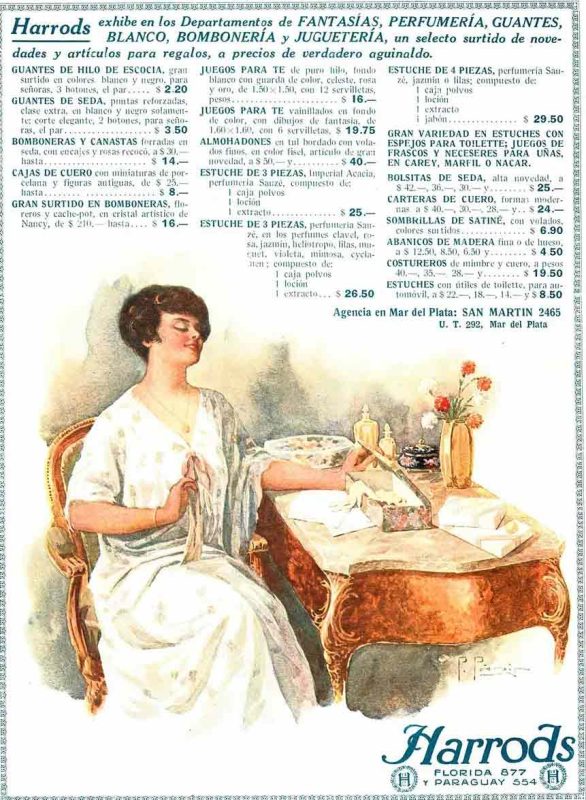
The Future of Harrods Buenos Aires — Go Woke, Go Broke?
Since 2014 it has been rumored Harrods would reopen as a LGBTQI+ themed shopping center.
What was once a city symbol of exclusivity now proposes vague plans to become a place of inclusivity.
Today, gay pride flags hang from the facade of Harrods and a group called Open Mind Investments Corp (link opens in new window) appears to be seeking investors to develop what they describe as a ‘contemporary, diverse and cosmopolitan’ shopping space.
Making the building even more mystifying is some of the offices are open, but they aren’t entered through any of the principal doorways.
From a conservation standpoint, the building needs an investment for a revival.
It would be ideal to restore the historic details such as the Tea Salon with its beveled mirrors and even the carousel gathering dust inside.
It has to be brought up to current safety codes and incorporate modern technology that has become essential to the 21st century shopping mall experience.
Harrods has been dormant so long that it’s not even wired for internet.
No one in the city is holding their breath – the reopening of Harrods has been announced several times through the years but its future hangs in limbo.
—Tango Week on the first floor of Harrods—
← cont. from: Florida Street— Outdoor Entertainment and Touts
→ continue reading: Galerías Pacífico, Florida Street’s Shopping Mall
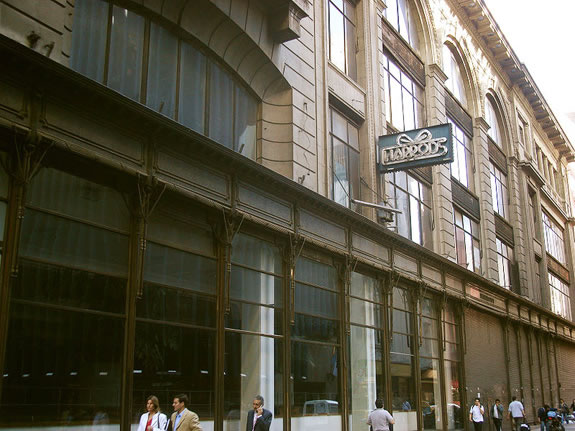
1 thought on “Harrods Buenos Aires: From 20th Century Decadence to 21st Century Decline”
Comments are closed.